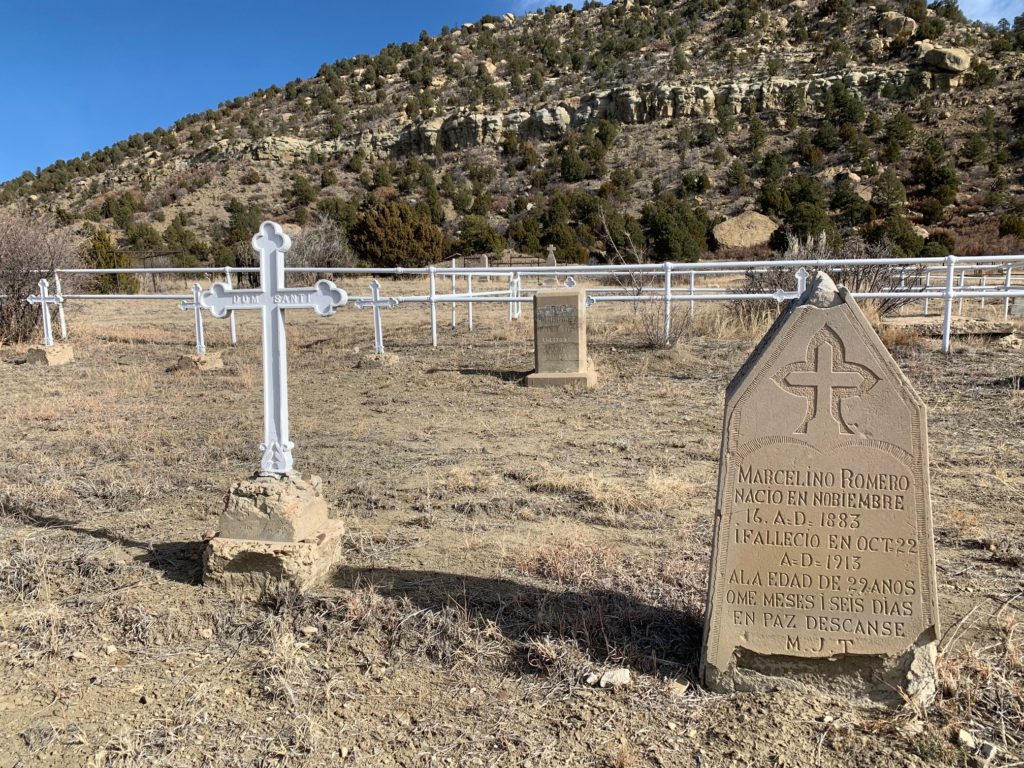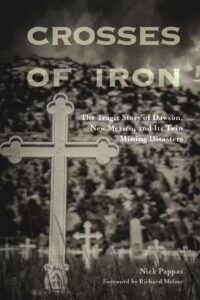SUBSCRIBE!
for updates to my blog
and to my events schedule
Italian family suffered unspeakable loss in Dawson’s 1913 mine disaster

Angelo. Beniamino. Carlo. Dom. Egisto. Geriomine. Luigi. Petro. Pit Della. Raymondo.
All emigrants from the same village in Italy. All coal miners. All among the 263 killed in the horrific Oct. 22, 1913, mine explosion in Dawson, New Mexico.
All with the same family name: Santi.
Ten in all.
Of the 146 Italian miners to die that day, 17 came from the Santis’ home village of Fiumalbo, a small town located in the province of Modena in the Emilia-Romagna region of northern Italy.
When news of the disaster reached the village, officials sent a telegram to the Italian Ministry of Foreign Affairs, seeking the names of the dead so they could notify the families. Two days later, the commissioner general of emigration replied with the names of 11, though that number would rise to 17.
Distraught villagers rallied around the stricken families. L’Eco del Panaro, a local magazine, offered to accept donations. And on Nov. 30, some 5,500 miles away from where the remains of their loved ones were buried under iron crosses, the Fiumalbo Provincial Council organized a public memorial to pay “tribute of admiration and regret to the valiant workers.”
The Santi name shows up extensively in Ellis Island passenger ship manifests, starting in 1839 with the arrival from Italy of 45-year-old Eugene Santi, who listed his occupation as “comedian.” A search of the online database generates nearly 1,400 exact matches for “Santi,” more than half before 1920. And taking into account the frequent misspellings – “Fumalbo,” “Fuinalbo,” “Funmablo,” etc. – roughly 40 listed their hometown as Fiumalbo.
By the 1910 census, more than a dozen of the Fiumalbo Santis identified themselves as coal miners living in Dawson. Others would arrive later, including three who would lose their lives in the 1913 explosion.
Angelo, one of those three, was the youngest of the Santi family members to die that day. He was just a boy of 16 with $25 in his pocket when the French passenger ship La Provence sailed into New York Harbor on Sept. 20, 1913 – barely a month before the mine disaster.
Angelo was accompanied on that voyage by Raymondo, 23, who was making his second transatlantic trip from Fiumalbo to America. Raymondo was 15 when he first stepped foot on U.S. soil on Oct. 21, 1905, along with six other Santis: Domenica, 30, Giuseppe, 29, Dionigi, 26, Geremia, 18, Antonio, 17, and Beniamino, 15. Almost eight years to the day later, Angelo, Beniamino, and Raymondo would be dead.
Like Raymondo, Carlo made the voyage to America accompanied by fellow Santis, arriving on Oct. 21, 1906. Carlo, 23, and Pellegrino, 19, headed to Dawson – or “Daddeson (N. Mex)” on the handwritten ship manifest – while Eugenio, 28, Giacinto, 20, and Celestino, 18, listed their destination as Des Moines, Iowa, a region opened to coal mining in the mid-1800s.
Carlo was listed in the 1910 census as sharing a house in Dawson with 19 other Italian emigrants, ranging in age from under 1 to 44. Four of them were Santis, including “Gisto” – or Egisto – who along with Carlo would die in the explosion.
Among the passengers on Egisto’s 1909 trip to America was Pacifico Santi, 18. He would die in a second mine blast 10 years later that claimed the lives of another 120 Dawson miners.
If all this weren’t bad enough:
The French passenger ship that carried Angelo and Raymondo from Le Havre, France, to New York in September 1913 suffered its own dismal fate.
On Feb. 26, 1916, after the French government had converted La Provence into an armed merchant cruiser in the run-up to World War I, a German U-boat torpedoed the ship while it was transporting troops from Marseilles, France, to Salonika, Greece. The French liner remained afloat for less than 15 minutes before plunging to the bottom of the Mediterranean Sea.
Crosses of Iron
by Nick Pappas
Now available to order from:
University of New Mexico Press
… and other booksellers.
Audiobook version available to order from …
… and other audiobook sellers.

